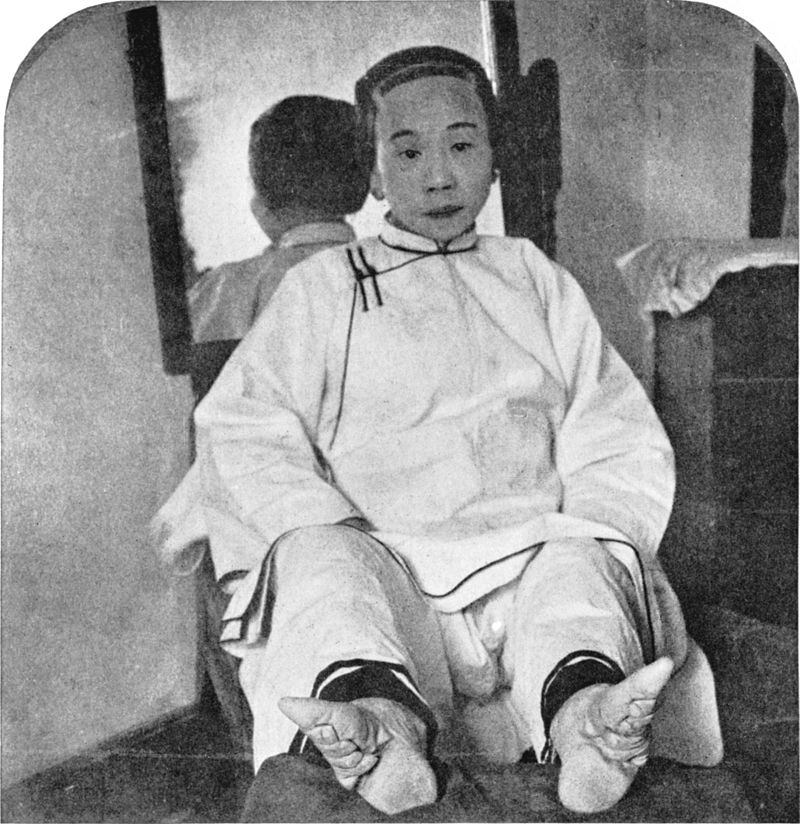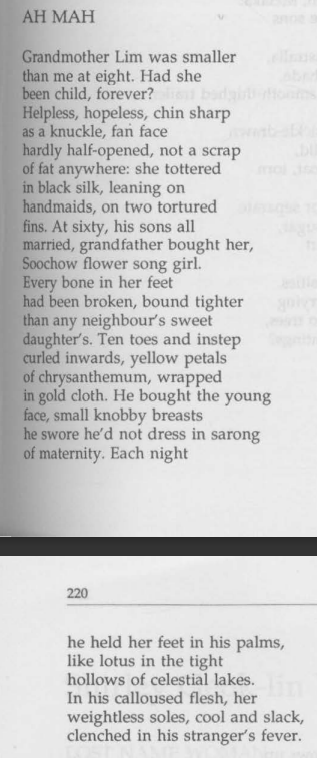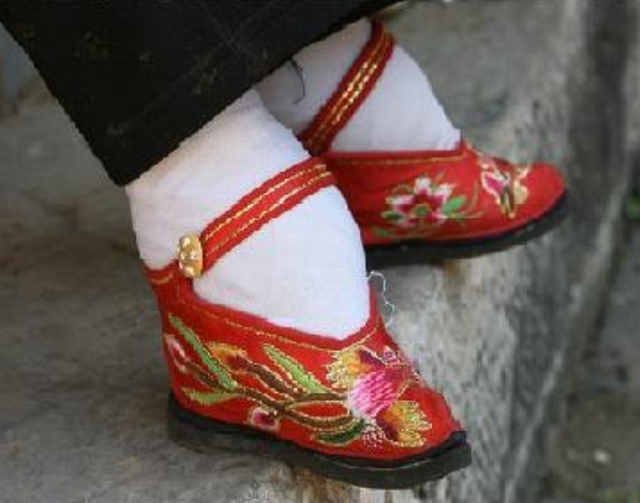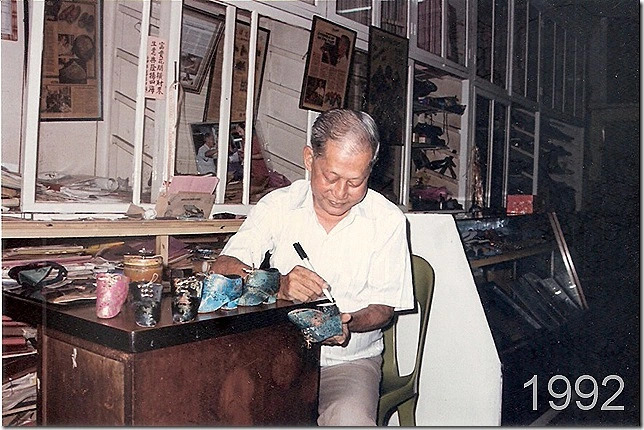
The tradition of beauty among women has evolved from the past. Nowadays, girls and women are familiar with makeup, fashion and even plastic surgery. But did you know that in the ancient Chinese tradition, they used to practice footbinding on young girls for beauty? This tradition was widespread in China and even spread to Malaysia, especially Malacca! Bound foot is called the lotus foot. Even though it looks beautiful to most people at the time, the story behind the creation of lotus feet and its consequences on the female body is horrifying. Let us take a look at the cruel Chinese tradition of foot binding or lotus feet through the poem ‘Ah Mah’ by Shirley Lim.
Ah Mah by Shirley Lim

In the poem above, the image of foot binding is seen as something horrendous and awful for young Chinese girls. Ah Mah is a Chinese word for grandmother. The character ‘Ah Mah’ faced a challenging tradition of foot binding ever since she was a young girl. The poem is based on the point of view of the grandmother’s granddaughter. The tradition of foot binding was once a very popular trend in the 10th century Chinese culture. In the poem, we can see that Ah Mah is suffering from the consequences of the tradition even at the old age.
Women treated as commodities
As someone born into a wealthy family, Ah Mah was shipped and bought by grandfather, along with her golden lotus feet. The golden lotus is the smallest and most desirable type of foot binding. The marriage rate of marriageability is high for women with small feet or golden lotus. As a woman, she is being objectified and treated like a commodity or trophy by men (grandfather). As a young girl, Ah Mah cannot resist the long-standing culture of oppression by men. At that time, it was normal for women to do everything for the satisfaction of men. The lotus feet were not only a symbol of beauty, but also of high status, as foot binding was usually only for girls who came from a wealthy family.
The painful process of foot binding
Some of the processes of foot binding are described in the poem in the lines “Every bone in her feet had been broken, bound tighter than any neighbour’s sweet daughter’s. Ten toes and instep curled inwards”. It shows the painful process Chinese girls have to go through to achieve the beauty standard of that time. The line “yellow petals of chrysanthemum, wrapped in gold cloth” shows another process, after the bones in the feet were broken and bent inward, the feet were then tightly wrapped with golden cloth to ensure and maintain the shape of the bound feet.

Oppression of women through foot binding
From a young age, Ah Mah learns through the oppressive tradition of foot binding that women are born to be objectified and measured by the preferences of men. This practice not only oppress women, but also dehumanize them, robbing them of a normal body and structuring them into the same standard of beauty. It prevented women from feeling unique and beautiful in their own way. Fortunately, the tradition began to die out in the early 20th century, after various campaigns against foot binding.
Have women ever escaped gender expectations?
The image of beauty is still an important expectation for women. The standard of beauty changes over time. It may not be as cruel as it used to be, but it is still very demeaning and objectifying to women. For example, the obsession with fair skin and the ridiculously high standard of beauty. Every woman is beautiful in her own way. Yet they are expected to live up to men’s standard of beauty. As a result, many women feel insecure about wearing no makeup, want to change their physical features through plastic surgery, and more. We can see that although foot binding is no longer practiced among women, it has still influenced later generations because it is the foundation of expectations for women.
Who is Shirley Lim?

Shirley Geok-lin Lim is an internationally acclaimed Chinese-Malaysian poet who speaks out against the oppression of women, especially Chinese women. She was born in 1944, during the Japanese occupation in Malaya. She comes from a mixed Hokkien and Peranakan family. Lim is a writer, poet, and critic. She was born in Malacca, one of the places where foot binding was practiced. In the 1920s, this was widespread, with up to 1,000 women in the city of Malacca having lotus feet. In addition to ‘Ah Mah’, Shirley Lim has also written other poems that focus on the oppression of women. For example, ‘Pantoun for Chinese Women’, ‘Hands’, ‘Inventing Mothers’, ‘The Rebel’ and more.









